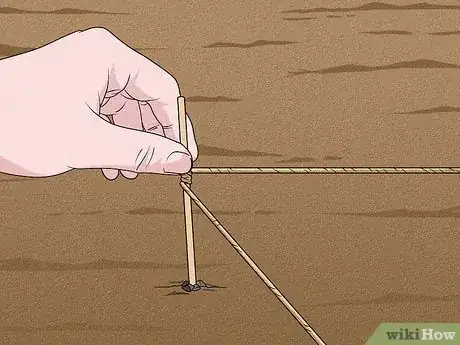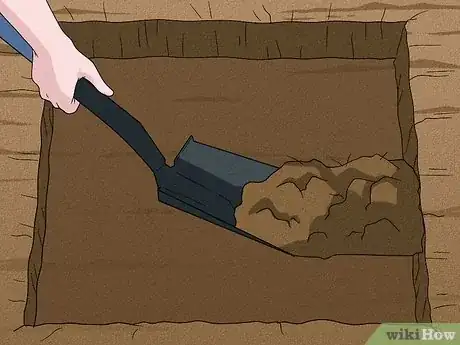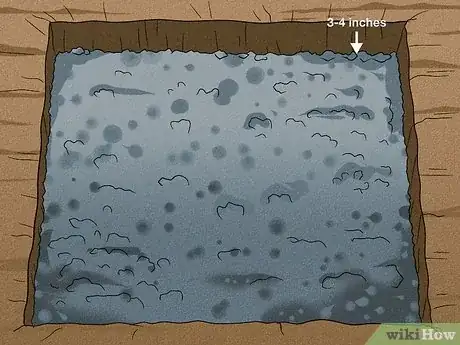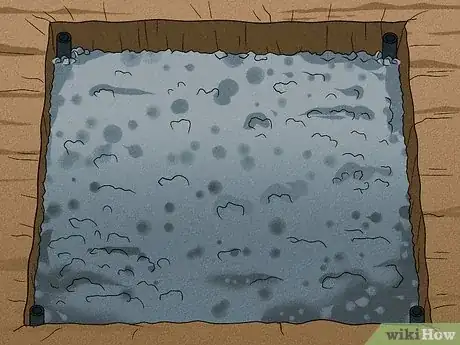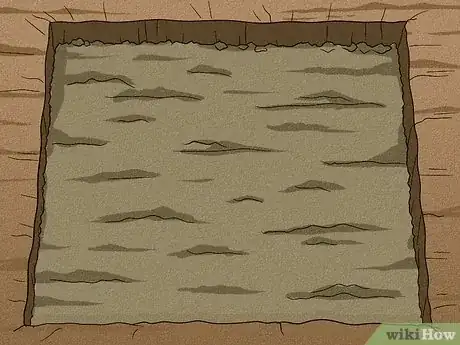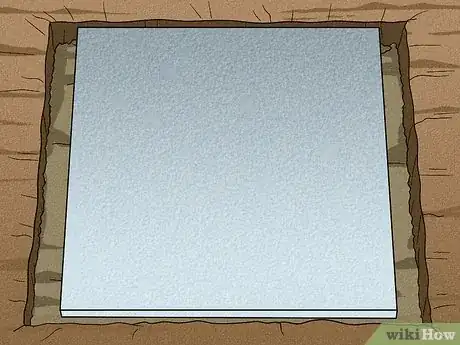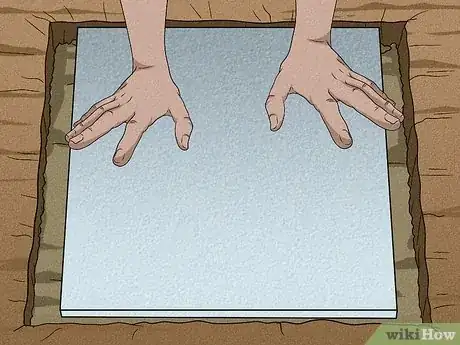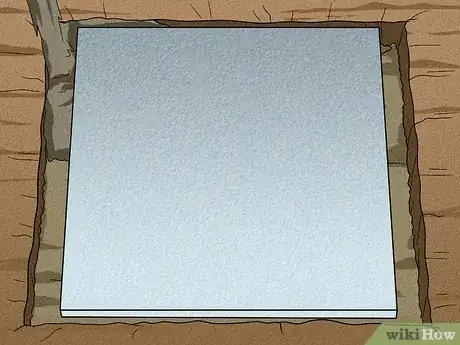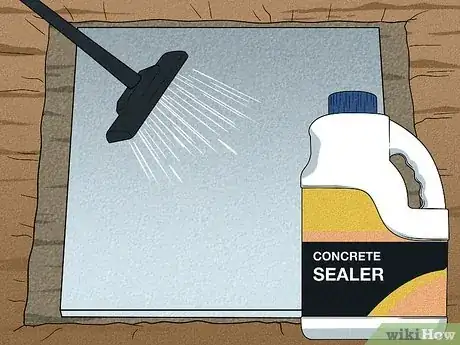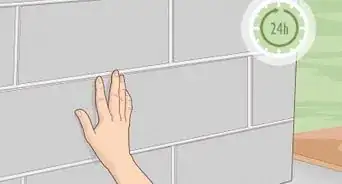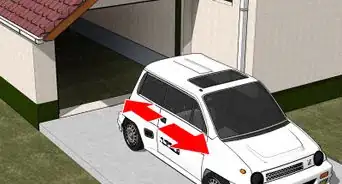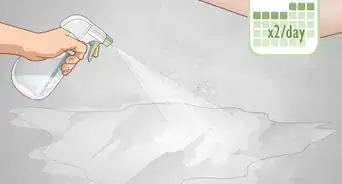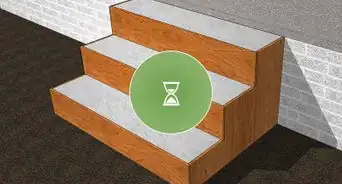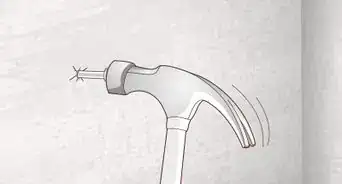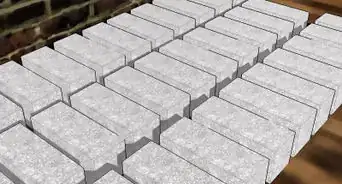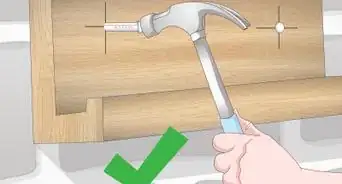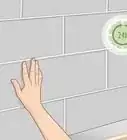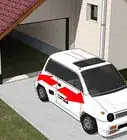This article was co-authored by Tony Hoang. Tony Hoang is a Landscaper and the Principal at H&J Landscaping & Concrete Contractor in Newark, CA. With over six years of experience, he specializes in designing the perfect concrete driveways & backyard patios for homes. H&J Landscaping & Concrete Contractor is a 4.5-star business on Yelp.
This article has been viewed 39,662 times.
Concrete pavers can be a beautiful addition to your landscape. They are incredibly strong and durable, making them the ideal solution for your driveway, walkway, patio, steps, or decorative elements around your home. Laying concrete pavers requires you to follow specific steps but before you begin, consider drawing out your design plan or using a free software do so. This will create a visual blueprint for you to follow.
Steps
-
1Mark the area. Use twine and sticks to mark the area where you will be laying your pavers and use it as a guide during the process.
-
2Excavate the soil. You will need to excavate 8 to 9 inches and then firmly compact the soil. Be sure to measure once done so that your patio, driveway, or walkway does not accidentally slope in any one direction.Advertisement
-
3Lay the base. Your pavers should not be placed directly onto the soil. Instead, they must be placed on top of a gravel base. High-quality, Class 2 Road Base is preferred for this type of project, and you will need enough to be 4 to 6 in (10 to 15 cm) deep throughout the entire area. If the concrete pavers are only being used for foot traffic, you can get by with a base that is only 3 to 4 in (7.6 to 10.2 cm) deep.
-
4Place the drainage system. If the area is prone to flooding, you may want to install a drainage system to ensure that the area remains free of standing water. There are several types of solutions you can use with the objective being to direct water away from the area using pipes or gravity.
-
5Compact the base. This is a critical step for ensuring that your pavers remain secure and do not shift over time. The base must be firm and secure.
-
6Lay bedding sand. Placed on top of the gravel base, bedding sand provides a smooth surface for your concrete pavers to be placed on. The sand needs to be 1 inch thick and perfectly leveled, the sand provides a gap and allows the pavers to be compacted.
-
7Place concrete paving stones. Use your drawing or rendering as a reference and begin laying your concrete pavers in the correct pattern. Begin with the interior pavers, placing them firmly onto the base and compacting them as you go. Next, lay your border pavers using the same technique.
-
8Compact and set pavers. Once all of your pavers have been placed, apply pressure to set each stone to ensure that it is firmly secured to your sand base.
-
9Add polymeric sand. This sand is preferred as the finishing touch to your concrete pavers installation. It is poured in between each paving stone and will serve to prevent weeds from growing in between the pavers, along with reducing the presence of unwanted insects.
-
10Clean the area. Sweep away any loose sand or debris from your paving stones prior to washing them with water.
-
11Seal your paving stones. To prolong the life of your pavers, apply a paver sealer on an annual or bi-annual basis.
Expert Q&A
-
QuestionHow do you cut concrete pavers?
 Tony HoangTony Hoang is a Landscaper and the Principal at H&J Landscaping & Concrete Contractor in Newark, CA. With over six years of experience, he specializes in designing the perfect concrete driveways & backyard patios for homes. H&J Landscaping & Concrete Contractor is a 4.5-star business on Yelp.
Tony HoangTony Hoang is a Landscaper and the Principal at H&J Landscaping & Concrete Contractor in Newark, CA. With over six years of experience, he specializes in designing the perfect concrete driveways & backyard patios for homes. H&J Landscaping & Concrete Contractor is a 4.5-star business on Yelp.
Landscaping Manager Use a standard circular saw or angle grinder with a diamond blade specifically designed for cutting masonry and stone. This will help prevent the blade from becoming blunt too quickly. It's also a good idea to set the paver on a non-slip mat before beginning to cut, which keeps the paver in place during cutting and prevents any accidents.
Use a standard circular saw or angle grinder with a diamond blade specifically designed for cutting masonry and stone. This will help prevent the blade from becoming blunt too quickly. It's also a good idea to set the paver on a non-slip mat before beginning to cut, which keeps the paver in place during cutting and prevents any accidents. -
QuestionCan I install over existing concrete?
 Community AnswerYep, it's done all of the time. But, pavers can be very uneven, so, you typically install them over a layer of sand or stone dust in order to get the tops flat and not have trip hazards and wobbly furniture. However, since you're usually above the surrounding grade, you'll want to soldier the perimeter to avoid pavers moving off of the concrete.
Community AnswerYep, it's done all of the time. But, pavers can be very uneven, so, you typically install them over a layer of sand or stone dust in order to get the tops flat and not have trip hazards and wobbly furniture. However, since you're usually above the surrounding grade, you'll want to soldier the perimeter to avoid pavers moving off of the concrete.
Warnings
- The gravel base must be compacted correctly, or you could risk your pavers shifting out of position due to future settling or movement within the base itself. This is one of the more challenging aspects of laying pavers and why many people choose to work with a professional.⧼thumbs_response⧽
